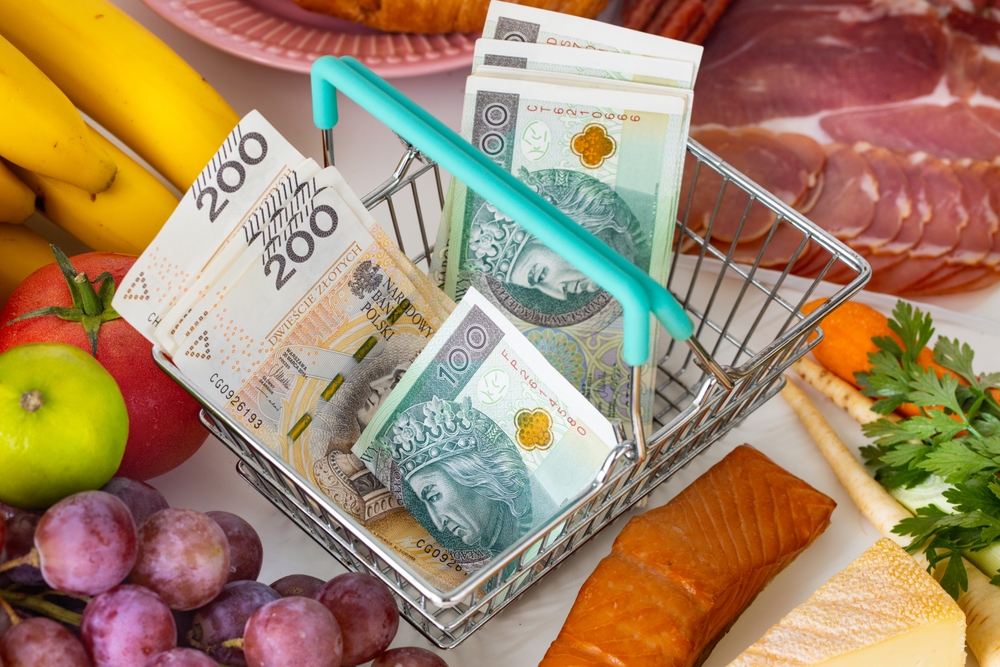The latest data confirms that inflation in Poland is rising, and after a few months, it has exceeded the permissible range for the NBP target. Inflation in September rose to 4.9 percent year-over-year, the Central Statistical Office reported on Monday morning, publishing preliminary data.
The data shows that the average prices of consumer goods and services in September 2024 were 4.9 percent higher than in the same month of the previous year. In August, this figure was 4.3 percent.
The acceleration in the annual price dynamics is mainly due to the effects of a low comparative base, i.e., a drop in the prices of energy, fuel, food and medicines a year ago. In monthly terms, prices have now increased by only 0.1 percent.
“The increase in the annual CPI inflation rate is largely the result of a low reference base from a year ago, when, on the wave of the easing of negative shocks on the commodity markets, fuel, energy and food prices dropped significantly. Core inflation also dropped significantly, which was partly related to a one-off drop in the prices of some services. In September of this year, only fuel prices dropped, while prices in the remaining main components (energy, food and core inflation) increased,” Bank Millennium economists announced regarding Monday’s data.
The September reading is the highest since December 2023 (6.2 percent) and turned out to be slightly higher than economists’ expectations: Most forecasts were in the range of 4.8-5.0 percent, and the average according to PAP was 4.8 percent. The Central Statistical Office will present full and final data in two weeks.
This is another month of acceleration in the dynamics of consumer goods and services prices away from the NBP target, understood to be in the range of 1.5-3.5 percent (the point target is 2.5 percent with tolerated deviations of +/- 1 percentage points).
The consumer price index hit a low in March, at just 2 percent, the lowest level in five years. Later, however, the index steadily climbed. In April, this figure rose to 2.4 percent, in May, to 2.5 percent, and in June, to 2.6 percent. In July, it jumped to 4.2 percent due to the partial expiration of energy price shields (this boosted CPI by 1.3-1.5 percentage points, an effect also visible in the data in subsequent months).
In September, prices of food and non-alcoholic beverages rose by 4.7 percent year-over-year, and energy carriers by 11.4 percent. Fuels for private means of transport fell by 2 percent.
Month-over-month, average consumer prices rose just 0.1 percent, which is good news, showing that the current momentum in prices is not alarming and that the year-on-year acceleration is largely due to statistical effects. This reading is in line with forecasts and identical to August.
Month-over-month, food and non-alcoholic beverage prices rose by 0.2 percent (down 0.1 percent in August). Energy prices also rose by 0.2 percent (the same as in August). Fuel prices fell by 3.4 percent (down 0.9 percent a month earlier).
According to economists from Santander Bank Polska, core inflation could have jumped above 4 percent year-over-year in September from 3.7 percent in August “and it is possible that it will not be able to go lower either this year or for the vast majority of the year, if not the entire next year.”
According to experts from ING Bank Śląski, it could even have risen to 4.2 percent. Core inflation is an indicator that does not take into account energy, fuel and food prices, meaning they are subject to significant changes and the central bank has less influence on them. Data on core inflation for September will be released on Oct. 16.






